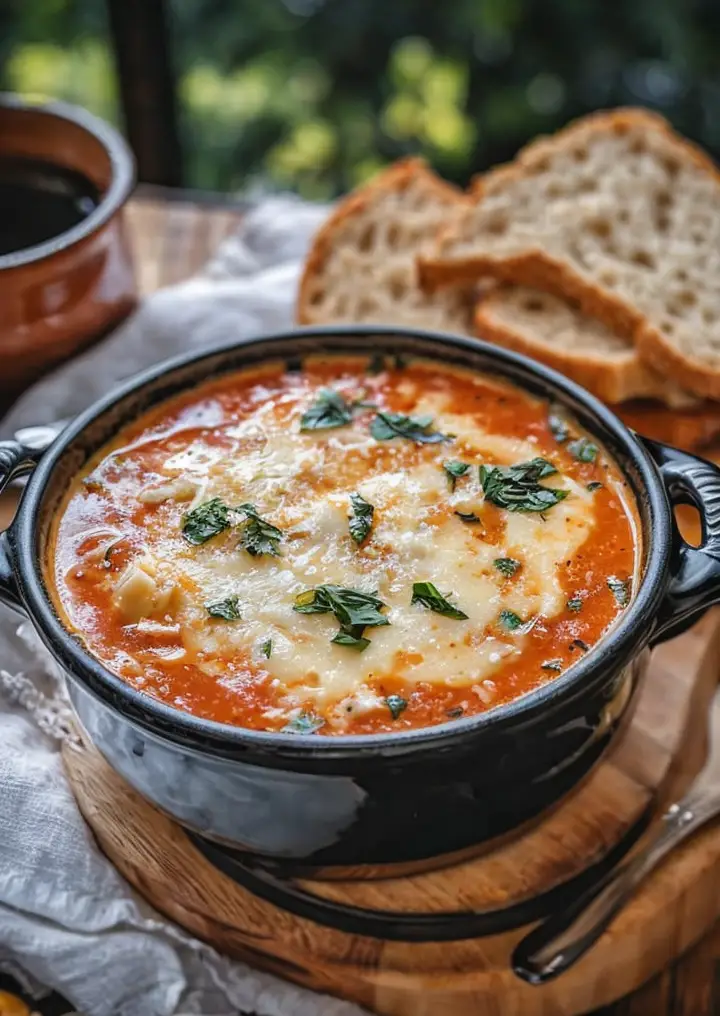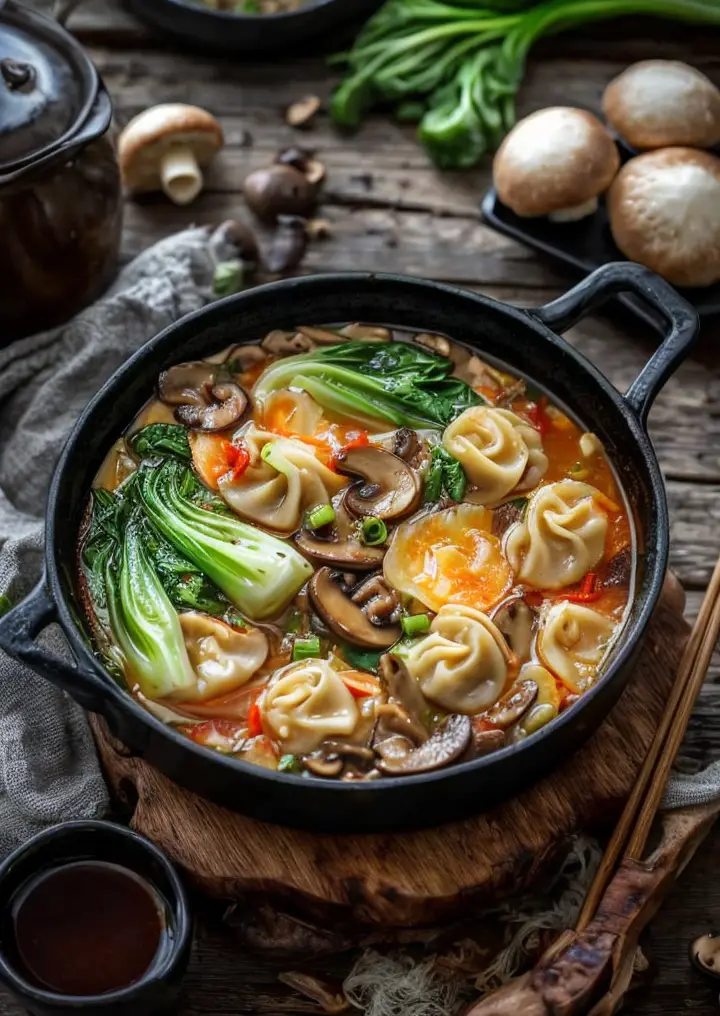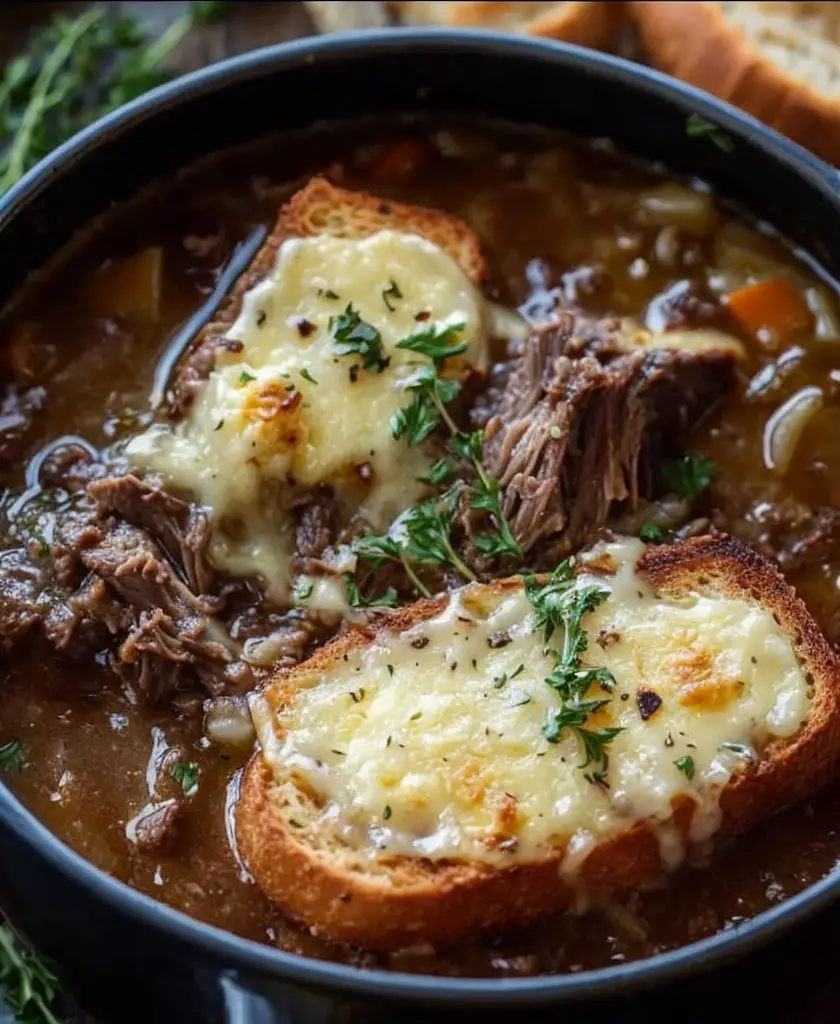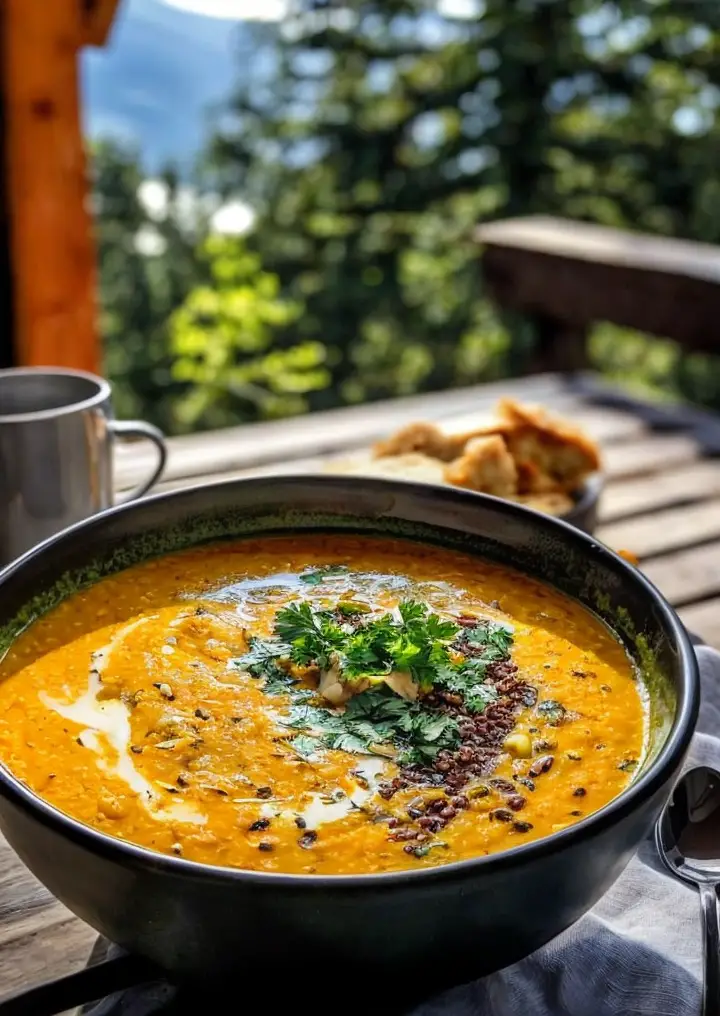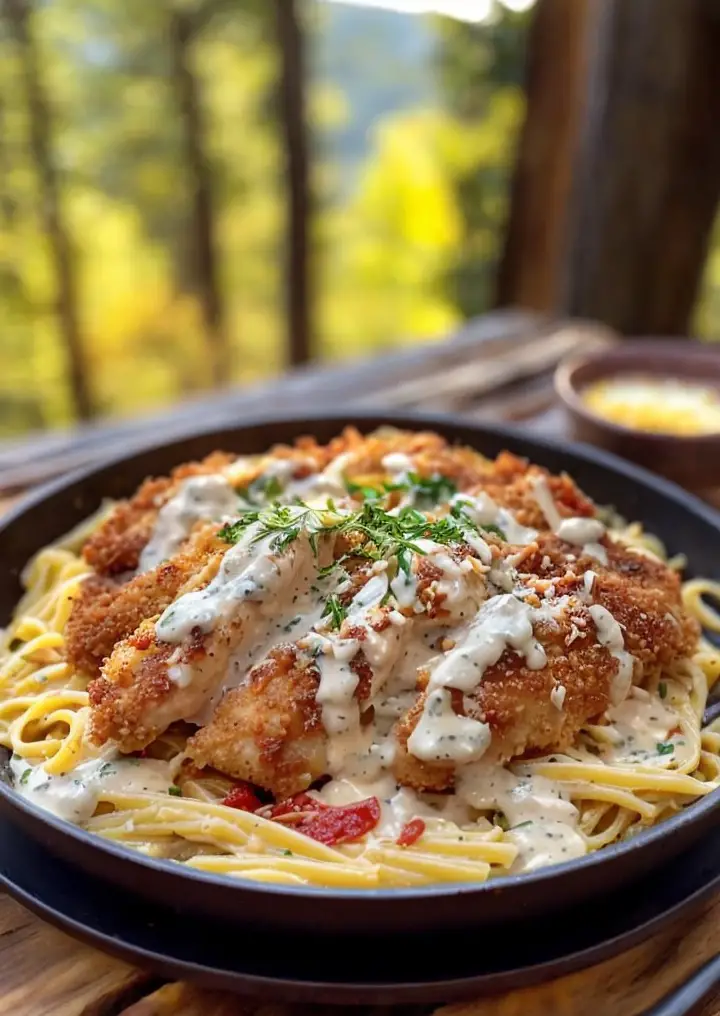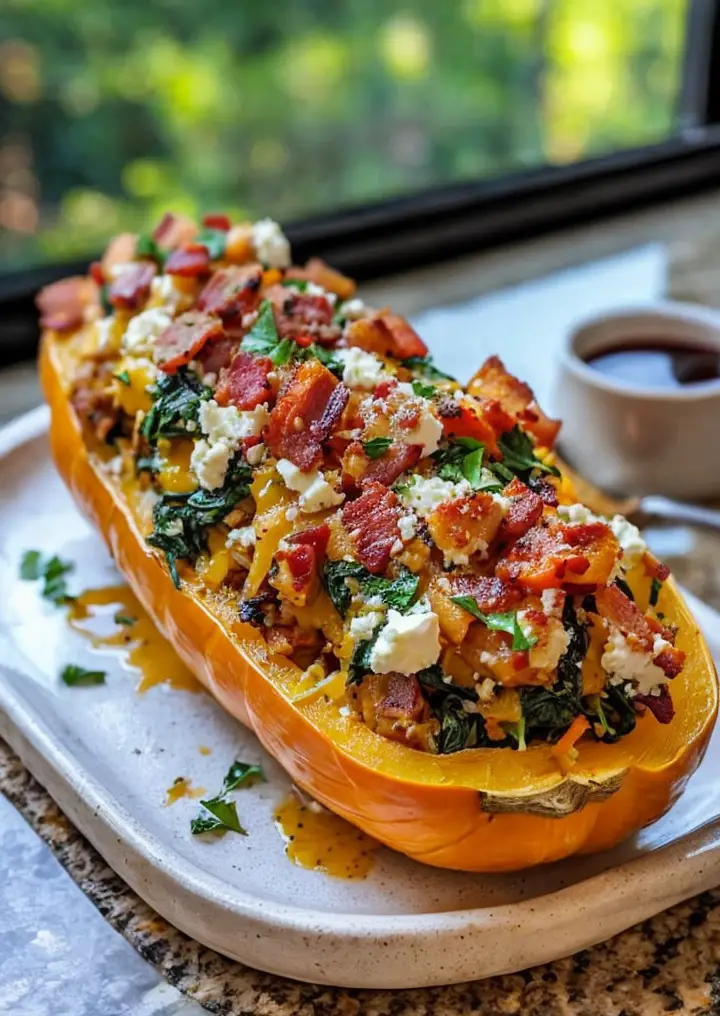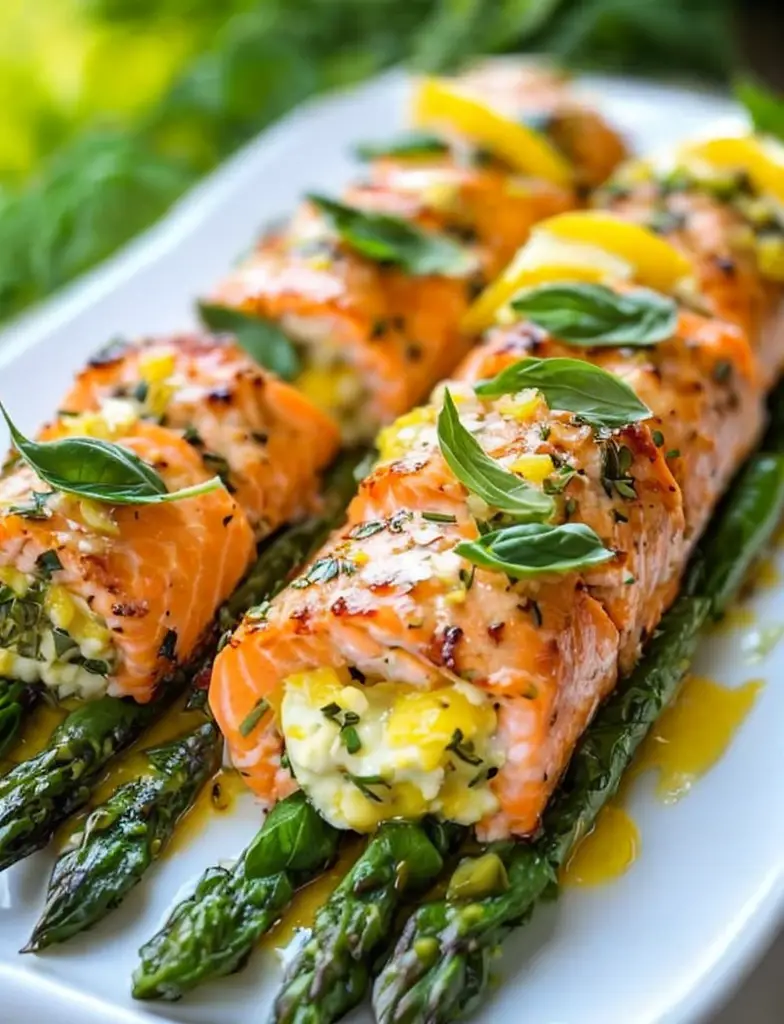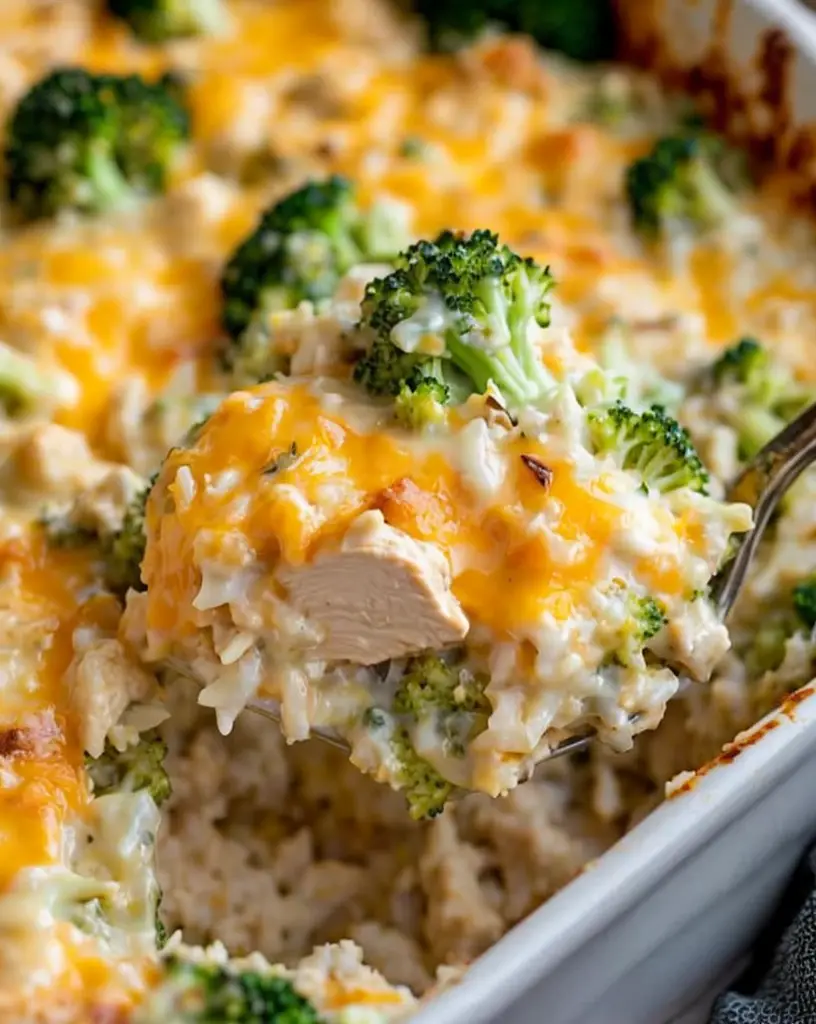Tuscan Parmesan Cream Soup: A Hearty Italian Delight
Welcome to the exquisite world of Tuscan cuisine! This Tuscan Parmesan Cream Soup is a rich and comforting dish that encapsulates the rustic charm of Italian countryside cooking. With its velvety texture and robust flavor profile, it’s a nourishing and satisfying option for any season. The creamy broth, infused with Parmesan cheese, together with the subtle undertones of garlic and herbs, creates an experience that is both indulgent and wholesome. Imagine a cold evening where you curl up with a warm bowl of this soup, each spoonful wrapping you in a warm embrace of Italian comfort.
Whether you’re hosting a dinner party or simply enjoying a cozy night in, Tuscan Parmesan Cream Soup serves as the perfect centerpiece or appetizer. This delightful recipe is easy to follow and requires ingredients that are often found in your pantry or local grocery store. Its simplicity allows the rich flavors to shine through, giving you a dish that looks beautifully sophisticated. Join me in exploring this heavenly soup that will surely become a family favorite!
Quick Recipe Highlights
- Flavor Profile: The Tuscan Parmesan Cream Soup features a delightful blend of savory garlic, aromatic herbs, and the nutty richness of Parmesan cheese.
- Texture: The soup boasts a creamy and luxurious mouthfeel, making it extraordinarily satisfying and comforting.
- Aroma: It fills your kitchen with warm, enticing aromas of sautéed garlic and fresh herbs that will whet your appetite.
- Visual Appeal: With its rich, creamy color and optional garnishes of fresh herbs, the soup presents beautifully in any bowl.
- Skill Level Needed: This medium-level recipe is perfect for both beginner and seasoned cooks looking to expand their repertoire.
- Special Equipment: A large pot and an immersion blender are essential for achieving the perfect creamy consistency.
Recipe Overview
- Difficulty Level: The recipe is rated as medium difficulty, requiring basic cooking techniques such as sautéing and blending.
- Category: This Tuscan Parmesan Cream Soup can be classified under soups and appetizers, making it versatile for various meal times.
- Cuisine: This dish draws inspiration from traditional Italian cooking, emphasizing simple, fresh ingredients that elevate everyday meals.
- Cost: The cost of preparing this soup is relatively low, as it utilizes affordable staples like vegetables, broth, and cheese.
- Season: This soup is perfect for any season, providing warmth during winter and a refreshing taste in spring.
- Occasion: It’s an excellent choice for cozy family dinners, holiday gatherings, or casual entertaining with friends.
Why You’ll Love This Recipe
This Tuscan Parmesan Cream Soup isn’t just another soup recipe; it’s a warm hug in a bowl. The first taste reveals exquisite layers of flavor, with the nuttiness of Parmesan harmonizing beautifully with the fresh herbs. Each spoonful is rich and creamy, making it incredibly satisfying. Whether paired with crusty bread or served as a stand-alone dish, this soup will transform your meal into an experience of comfort and indulgence.
When it comes to convenience, this recipe delivers. With just one pot required, cleanup is effortless, allowing you to enjoy your meal without the hassle of extensive dishwashing. The preparation time is also minimal, and most of the ingredients are pantry staples. It’s a fill-and-stir kind of recipe that will have you enjoying flavorful food in no time.
Tuscan Parmesan Cream Soup isn’t just about the taste—it’s a nutritious powerhouse. Packed with vegetables and the goodness of cheese, it offers a good balance of protein, vitamins, and minerals. The combination of flavors and textures also allows you to sneak in more nutrients without compromising on taste.
Gathering around a warm bowl of soup creates a sense of togetherness, making it perfect for family meals or social gatherings. Its inviting aroma and rich taste will have your guests raving, serving as a fantastic conversation starter and enhancing your entertaining experience.
Finally, this recipe is cost-effective, leveraging inexpensive ingredients to create a gourmet feel. It’s a budget-friendly option that doesn’t skimp on quality or flavor, making it accessible for all home cooks.
Historical Background and Cultural Significance
The origins of Tuscan soups date back centuries, reflecting the region’s agricultural heritage. Traditional Tuscan cuisine often celebrates simple, wholesome ingredients, making use of local produce and showcasing the beauty of seasonal flavors. Soups in Tuscany were originally created to help use leftover bread and maximize ingredient use, turning humble ingredients into delightful meals.
Culturally, Tuscan cuisine holds a significant place in Italian gastronomy, emphasizing the importance of communal dining and family meals. Dishes like this Parmesan Cream Soup represent the heart of Italian cooking—rich in flavor and designed to bring people together.
Over the years, the recipe has evolved, incorporating various vegetables and herbs that are unique to the region. Each family may add their own touch, whether by using different bases or garnishing methods, ensuring that each bowl of soup reflects personal history and tradition.
Regional variations also play a crucial role, with different areas of Tuscany adding local ingredients such as wild herbs or seasonal vegetables. This adaptability keeps the dish relevant and allows it to change with the seasons while remaining true to its roots.
Ingredient Deep Dive
Parmesan Cheese: This beloved cheese has a rich history that dates back centuries in Italy. Made from cow’s milk, Parmesan is known for its strong, nutty flavor, which intensifies as it ages. Nutritionally, it’s a great source of protein and calcium. When selecting Parmesan, look for Parmigiano-Reggiano with a DOP seal. Store it in a cool, dry place wrapped in wax paper to maintain freshness.
Garlic: Garlic has been a staple in Mediterranean cuisine for thousands of years, praised not only for its flavor but for its numerous health benefits, including boosting the immune system. When purchasing garlic, choose firm bulbs with tight, dry skin. Store garlic in a cool, dark place and avoid the refrigerator to prolong its shelf life.
Common Mistakes to Avoid
- Overcooking the vegetables: Sautéing should be done just until tender; overcooking can lead to mushiness and loss of flavor.
- Skipping the seasoning: The soup needs salt to enhance the flavor of the ingredients, especially the broth and cheese.
- Using pre-grated cheese: Freshly grated cheese melts better and offers a superior flavor compared to pre-packaged options.
- Rushing the blending process: If the soup isn’t fully blended to a creamy consistency, it may not achieve the desired texture.
- Not letting the soup simmer: Allowing the flavors to meld during simmering is crucial for overall taste development.
- Choosing the wrong broth: Using a low-quality broth can dilute the flavor; always opt for a good quality or homemade stock.
- Failing to taste and adjust: Always taste your soup before serving to adjust seasoning and balance flavors.
- Ignoring garnishes: Garnishes like fresh herbs can elevate the visual appeal and add a fresh contrast to the creaminess.
Essential Techniques
Perfectly sautéing vegetables: Properly cooking your vegetables at the right temperature brings out their natural sweetness and flavor. Start at a medium to medium-high heat, allowing for browning without burning. Stir occasionally and watch for visual cues—a slight caramelization on the edges is a sign of good sautéing.
Blending for creaminess: Using an immersion blender is vital for achieving that luxurious creaminess. Blend the soup until it reaches a silky, smooth consistency, taking care not to overblend, which can make it overly thin. Visually, look for a uniform texture, free of lumps.
Pro Tips for Perfect Tuscan Parmesan Cream Soup
1. Use high-quality Parmesan cheese for the best flavor and melt. Freshly grated will create a creamier texture.
2. Enhance the flavor by adding a splash of white wine during the sautéing process; it adds depth to the dish.
3. For a little heat, consider adding a pinch of red pepper flakes when sautéing the garlic.
4. Serve with crusty bread for dipping; it complements the soup beautifully and adds a satisfying texture contrast.
5. If you prefer a chunky soup, reserve some sautéed vegetables to stir in after blending.
6. Experiment with different herbs like thyme or rosemary to tailor the flavor profile to your liking.
7. Garnish with a swirl of cream and a sprinkle of fresh herbs for an elegant presentation.
8. Allow the soup to cool before storing in the refrigerator; this helps preserve its quality.
Variations and Adaptations
For a regional twist, consider adding cannellini beans, which add heartiness and complement the flavors of the soup beautifully. Seasonal adaptations can include using fresh, in-season vegetables like zucchini or asparagus, further enhancing the freshness of the dish. If you aim for dietary modifications, incorporating almond milk or cashew cream can create a dairy-free version, while still maintaining a rich taste.
Flavor variations might involve infusing the broth with smoked paprika or adding sun-dried tomatoes for a Mediterranean twist. Texture modifications can be achieved by including pasta or grains, such as orzo or quinoa, for a heartier experience. Finally, enhance the presentation with a drizzle of olive oil or a sprinkle of chili flakes for added color and flavor complexity.
Serving and Presentation Guide
For an appealing presentation, opt for wide, shallow bowls that showcase the soup and its garnishes. Consider garnishing with chopped fresh basil or parsley for a pop of color. Traditional accompaniments include crusty bread or cheesy garlic toast, which also serve as functional scoops. Modern serving suggestions may involve pairing the soup with a fresh salad on the side to balance the richness. Serve warm, but allow some time to cool slightly before serving to avoid burns.
Wine and Beverage Pairing
A light, crisp Pinot Grigio pairs beautifully with this soup, cutting through its richness. Alternatively, a Sangiovese can complement the soup’s savory notes while maintaining balance. For non-alcoholic options, consider sparkling water with a slice of lemon for a refreshing contrast. Additionally, if you enjoy coffee, a light roast brewed on the milder side can enhance the creamy flavor profile of the soup.
Storage and Shelf Life
To store Tuscan Parmesan Cream Soup, place it in an airtight container and refrigerate. It will stay fresh for about 3-4 days. When freezing, ensure the soup has completely cooled before transferring it to a freezer-safe container, which can prolong its lifespan up to three months. To reheat, gradually warm on the stovetop and add a splash of broth or cream if it thickens too much. Always check for signs of spoilage, such as off odors or changes in texture.
Make Ahead Strategies
You can prepare this soup a day or two in advance, allowing the flavors to meld beautifully. Chop all vegetables and store them in the refrigerator until you’re ready to cook. After cooking, cool the soup completely before refrigerating. To maintain freshness, store garnishes separately. When reheating, consider adding fresh cream or herbs for a boost in flavor and freshness.
Scaling Instructions
If you want to halve the recipe, simply divide each ingredient measurement by two, ensuring the cooking time remains similar. Doubling or tripling the recipe can be done easily; just remember to adjust the size of your cooking pot. Keep an eye on cooking times, as larger quantities may require a slightly longer simmering period to achieve the same depth of flavor.
Nutritional Deep Dive
This Tuscan Parmesan Cream Soup boasts a balance of macronutrients, providing carbohydrates from the vegetables, proteins from the Parmesan, and healthy fats from any added oils. The soup is also rich in vitamins A and C, thanks to the vegetables, and calcium from the cheese. To enjoy it as part of a weight management plan, control portion sizes, as it’s quite filling due to its creamy texture.
Dietary Adaptations
For a gluten-free version, ensure that the broth and any bread accompaniments meet dietary requirements. To create a dairy-free or vegan variant, substitute the Parmesan with nutritional yeast and use a plant-based milk for creaminess. Low-carb dieters can enjoy this soup by omitting potatoes or other high-carb vegetables and focusing on green leafy vegetables instead. These adaptations can help make the recipe more accessible for various dietary needs.
Troubleshooting Guide
If your soup turns out too thick, simply add more broth or water until you reach the desired consistency. Should it lack flavor, a pinch of salt or a splash of vinegar can enhance the overall taste. If your soup appears too watery, allow it to simmer uncovered for a while to concentrate the flavors. When blending, if the soup becomes too grainy, blending for a longer period can help smoothen the texture.
Recipe Success Stories
Many home cooks have praised this Tuscan Parmesan Cream Soup for its depth of flavor and ease of preparation. Families report it becoming a staple in their homes, especially during colder months. Variations shared by readers include adding roasted tomatoes or spinach, further personalizing the dish. Popular requests often include photography tips, encouraging users to share their creations online to inspire others.
Frequently Asked Questions
Can I use a different cheese? Yes, while Parmesan brings a distinctive flavor, you can experiment with Grana Padano or Pecorino Romano for an alternative taste.
How can I make this soup vegan? Substitute the Parmesan with nutritional yeast, and replace dairy with coconut milk or cashew cream.
Can I freeze leftovers? Absolutely! Portion the soup into airtight containers, and it can freeze well for up to three months.
Can I use fresh herbs instead of dried? Yes, fresh herbs can provide a more vibrant flavor; just adjust the quantity as fresh herbs are usually less intense.
What can I serve with the soup? Crusty bread, salads, or even grilled cheese sandwiches make excellent pairs.
Is this soup kid-friendly? Yes, its creamy texture and mild flavor appeal to both kids and adults, making it a family favorite.
What’s the best way to store the soup? Keep it in an airtight container in the fridge and reheat over low heat on the stove when ready to serve.
Can I add protein to this soup? Certainly! Adding shredded chicken or beans can make this soup even heartier.
What is the best broth to use? A homemade chicken or vegetable broth is ideal for the best flavor, but a quality store-bought version can work well too.
How can I thicken the soup if it’s too thin? Simmering the soup uncovered for a while can help concentrate the flavors and thicken the consistency.
Additional Resources
If you’re looking to expand your culinary skills, check out related recipes that also harness the simplicity and flavors of Italian cuisine. Technical guides on soup-making and ingredient information can enhance your cooking proficiency. Invest in high-quality kitchen equipment, such as an immersion blender, to elevate your homemade dishes.
Join the Conversation
We’d love to see your versions of Tuscan Parmesan Cream Soup! Feel free to share your photos on social media, and don’t forget to tag us. Join the community discussions to exchange tips, variations, and techniques, fostering a shared love for cooking and meal sharing!
The Recipe
Tuscan Parmesan Cream Soup
Serves: 4
Prep Time: 15 mins
Cook Time: 30 mins
Total Time: 45 mins
Kitchen Equipment Needed
- Large pot
- Immersion blender
- Measuring cups and spoons
- Cutting board and knife
Ingredients
- 2 tablespoons olive oil
- 1 medium onion, chopped
- 2 cloves garlic, minced
- 4 cups vegetable or chicken broth
- 2 medium potatoes, peeled and diced
- 1 cup heavy cream
- 1 cup freshly grated Parmesan cheese
- Salt and pepper, to taste
- Fresh herbs for garnish (such as basil or parsley)
Directions
- In a large pot, heat olive oil over medium heat. Add chopped onion and garlic, sauté until softened and fragrant.
- Add diced potatoes and broth; bring the mixture to a gentle boil. Reduce heat, cover, and simmer until potatoes are tender.
- Once potatoes are cooked, use an immersion blender to puree the soup until smooth.
- Stir in heavy cream and Parmesan cheese until melted and well combined. Season with salt and pepper to taste.
- Serve hot, garnished with fresh herbs.
Recipe Notes
- For an extra flavor boost, try adding a splash of white wine before simmering the broth.
- Feel free to incorporate additional vegetables, such as carrots or spinach, for extra nutrients.
- This soup can be stored in an airtight container for up to 3 days in the fridge, or frozen for up to 3 months.
